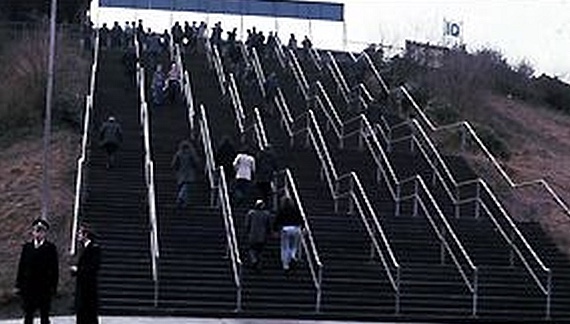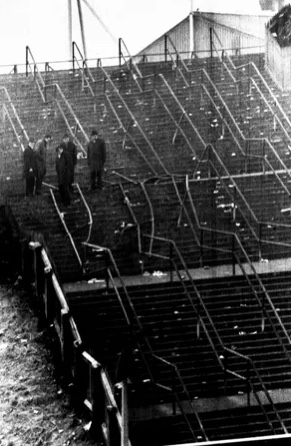The Weekly Reflektion Week 01 / 2021
The 50th anniversary of the Ibrox disaster is on January 2nd,2021. 66 people were killed leaving a football match. Let’s hope there will be no disasters in 2021 that we will be remembering in 2071.
Signals that things are not as they should be are often present, but are we looking for these signals?


On January 2nd, 1971 Rangers Football Club were hosting Celtic at Ibrox Park in a Glasgow derby called the ‘Old Firm’.The teams were drawing 0-0 until the 89th minute when Jimmy Johnstone scored for Celtic, and Rangers fans began leaving the stadium assuming that the game was lost. Colin Stein replied almost immediately for Rangers to make the final score 1-1.
As the Rangers fans were leaving the ground down stairway 13, a steep seven-laned exit, probably someone lost their footing, pushing over others caused a cascade dynamic with people falling on top of others, causing the tubular metal barriers to collapse. 66 football fans died, almost half of these under 20 years of age. Most of the deaths were caused by compressive asphyxia, the people suffocated, being unable to breathe in the crush. The dead were laid out on the football pitch, with Celtic manager, Jock Stein, and Rangers coach, Jock Wallace working as stretchers bearers.
In the previous decade, three serious incidents had occurred on stairway 13. In 1961, 2 people died and 70 were injured while leaving down the same stairs. The then wooden barriers were changed out with tubular metal barriers, but the fundamental stairway design remained unchanged. One criticism levelled at the design was that it ‘provided very little freedom of movement’ with no possibility to ‘fan-out’ sideways if the crush became too high. In 1967, 8 fans were injured on the same staircase, and in 1969, 26 were injured. These signals are not ‘weak’ signals but very ‘strong’ signals that things were not as they should be.
Rangers took further action in 1969 by reinforcing the outside fences with concrete which prevented fans moving sideways if the crush of fans became too high. With hindsight it is easy to say that Rangers had not addressed the root cause of the problem. This reinforcing of the outside barriers was described as ‘hardly comprehensible’ by the inquiry. Rangers lawyers argued that ‘unpredictable human conduct’ was the cause of the incident, and that ‘spectators caused their own problem’ by acting in an undisciplined way leaving the stadium. The court disagreed and Rangers were found guilty of negligence and significant damages were awarded against the football club.
Rangers has never shied away from commemorating the Ibrox disaster, holding an annual tribute to the victims, also building a memorial with the names of the victims at the new Ibrox Stadium. The disaster led to the 1975 Safety of Sports Grounds Act which required councils to issue safety certificates for football grounds. However, more tragedy was to follow with the Bradford City Football Club fire and the Hillsborough disaster to which we shall come back to in later reflections.
When signals are clear, what excuse do we have to take no action, or even worse, the wrong actions? In your operations, you owe it to the work force and your workmates to look for these signals, to identify the causes, and to correct them. Do you have an effective process to make sure that this happens?
